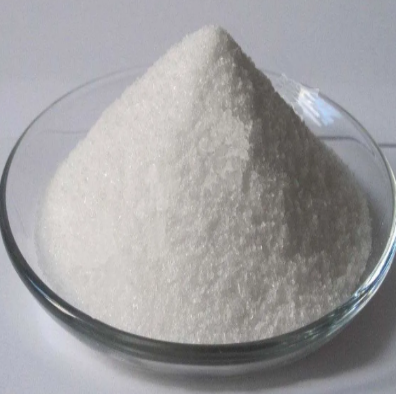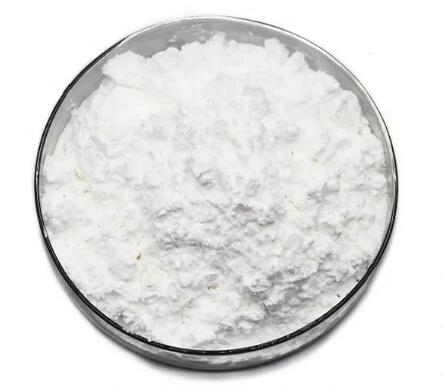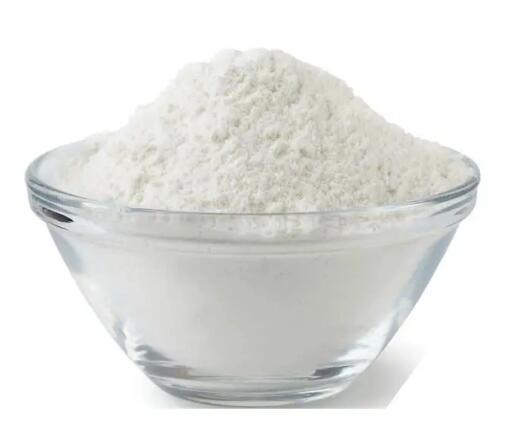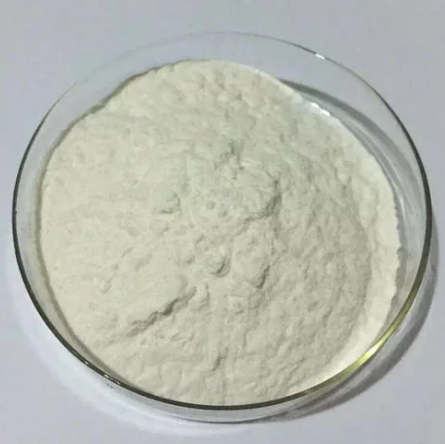-

METHYL Beta-D-GLUCOPYRANOSIDE HEMIHYDRATE CAS:7000-27-3
Methyl beta-D-glucopyranoside hemihydrate is a chemical compound that belongs to the class of glucopyranosides. It is a white crystalline powder that is soluble in water. This compound is commonly used as a carbohydrate source in cell culture media and a substrate for enzymatic reactions in biochemical and biotechnological research. It can serve as a model compound to study carbohydrate metabolism, transport, and utilization in various biological systems. Methyl beta-D-glucopyranoside hemihydrate finds applications in the field of glycobiology, enzymology, and drug development, where it is utilized as a tool compound for various assays and experiments.
-

AMPSO CAS:68399-79-1 Manufacturer Price
AMPSO, or 3-[(1,1-dimethyl-2-hydroxyethyl)amino]-2-hydroxypropanesulfonic acid, is a zwitterionic buffer commonly used in biological and biochemical research. It has a pKa value of around 7.9, making it suitable for maintaining stable pH conditions in a variety of experimental settings.AMPSO is often utilized in cell culture media, protein purification, enzyme assays, electrophoresis gels, and DNA sequencing. It helps maintain the desired pH range, ensuring optimal conditions for cell growth, protein stability, enzyme activity, and accurate separation and analysis of biomolecules.With its ability to resist pH changes caused by addition of acids or bases, AMPSO is a valuable tool in maintaining precise pH control in a range of biological and biochemical experiments.
-

Bis-tris hydrochloride CAS:124763-51-5
Bis-tris hydrochloride is a compound with buffering properties commonly used in biochemical and biological experiments. It helps maintain a stable pH and is utilized in protein electrophoresis, enzyme activity assays, cell culture, and pharmaceutical formulations. Its main function is to resist changes in pH when acids or bases are added to a solution, making it an essential tool in various scientific and industrial applications.
-

4-Nitrophenyl-beta-D-glucopyranoside CAS:2492-87-7
4-Nitrophenyl-beta-D-glucopyranoside is a substrate commonly used in biochemical experiments to assess the activity of enzymes such as β-glucuronidase. This compound is hydrolyzed by the enzyme, resulting in the release of 4-nitrophenol, which can be measured using spectrophotometry. Its use enables researchers to study various aspects of drug metabolism, toxicology, and clinical diagnostics related to glucuronidation reactions.
-

AMPD CAS:115-69-5 Manufacturer Price
2-Amino-2-methyl-1,3-propanediol, also known as AMPD or α-methyl serinol, is a chemical compound with the molecular formula C4H11NO2. It is an amino alcohol that is commonly used as a chemical intermediate in the synthesis of pharmaceuticals and organic compounds. AMPD is known for its ability to act as a chiral auxiliary in asymmetric reactions, making it valuable in the production of enantiomerically pure compounds. Additionally, it has been utilized as an ingredient in personal care and cosmetic products for its moisturizing properties.
-

CAPS SODIUM SALT CAS:105140-23-6
CAPS sodium salt is a zwitterionic buffer commonly used in biochemical and molecular biology applications. It has a pKa value of approximately 10.4, making it effective for pH ranges between 9.7 and 11.1. CAPS sodium salt is used in protein electrophoresis, enzymatic reactions, biological and chemical assays, and cell culture media. It provides resistance to pH changes caused by contaminants and has good solubility in water.
-

ALPS CAS:82611-85-6 Manufacturer Price
N-Ethyl-N-(3-sulfopropyl)aniline sodium salt is a chemical compound that contains an amine group (aniline) with an ethyl and sulfopropyl group attached to it. It is in the form of a sodium salt, meaning that it has been ionically bonded with a sodium ion to increase its solubility in water. This compound is commonly used in chemical synthesis, pharmaceuticals, and dye manufacturing. Its precise applications and properties can vary depending on the specific use case.
-

N-(2-Aminoethyl)morpholine CAS:2038-03-1
N-(2-Aminoethyl)morpholine, also known as AEM, is a chemical compound with a linear structure. It consists of a morpholine ring with an aminoethyl group attached to one of its nitrogen atoms. AEM is a colorless liquid with a characteristic odor.
AEM finds application in various industrial sectors. It is primarily used as a solvent for organic compounds due to its excellent solvency properties. Additionally, AEM acts as a corrosion inhibitor in industries involving metal cleaning, oil and gas production, and water treatment. It helps protect metals from rust and corrosion.
Furthermore, AEM serves as a chemical intermediate for the synthesis of pharmaceuticals, agrochemicals, and specialty chemicals. It is employed in polymer additives to improve the adhesive properties of coatings, adhesives, and sealants. AEM is also used as a pH adjuster or buffering agent in certain industrial processes.
-

POPSO CAS:68189-43-5 Manufacturer Price
POPSO, short for Piperazine-N,N’-bis(2-hydroxypropanesulfonic acid) sesquisodium salt, is a buffering agent commonly used in biological and biochemical research. It helps maintain a stable pH level in solutions, particularly within the physiological pH range. PIPES sesquisodium salt is used in cell culture, protein biochemistry, electrophoresis, molecular biology techniques, drug delivery systems, and more. Its ability to regulate pH makes it a valuable tool in various research and industrial applications.
-

piperazine-1,4-bis(2-ethanesulfonic acid) disodium salt CAS:76836-02-7
Disodium piperazine-1,4-diethanesulphonate is a chemical compound that is commonly used as a buffering agent and stabilizer in various scientific and medical applications. It is an organic sodium salt derived from piperazine and diethanesulphonic acid.
This compound is highly soluble in water and has a white crystalline appearance. It is known for its pH-regulating properties, helping to maintain the acidity or alkalinity of solutions within a desired range.
One major application of disodium piperazine-1,4-diethanesulphonate is in the field of electrophysiology and neurobiology. It is often used as a component of electrophysiological recording solutions and cell culture media to maintain the stability and integrity of cells and tissues during experimental procedures.
Additionally, this compound has been found to have some neuroprotective and antioxidant effects, making it potentially useful in research related to the central nervous system and oxidative stress.
-

HEPPSO CAS:68399-78-0 Manufacturer Price
Beta-hydroxy-4-(2-hydroxyethyl)-1-piperazinepropanesulfonic acid, also known as HEPPS, is a chemical compound primarily used as a buffering agent in biological and biochemical research. It is commonly utilized in laboratory settings to maintain a stable pH level during experiments involving sensitive biological samples. HEPPS is a zwitterionic compound, meaning it carries both positive and negative charges, which allows it to effectively regulate pH in a wide range of solutions. Its solubility in water and ability to maintain pH stability over a range of temperatures make it a popular choice for various research applications.
-

4-Methylumbelliferyl-beta-D-glucopyranoside CAS:18997-57-4
4-Methylumbelliferyl-beta-D-glucopyranoside is a substrate commonly used in enzymatic assays to study the activity of beta-glucosidase enzymes. When acted upon by beta-glucosidase, it undergoes hydrolysis, resulting in the release of 4-methylumbelliferone, which can be detected and quantified using fluorescence spectroscopy. This compound is widely used in the fields of biochemistry, molecular biology, and biotechnology for enzyme activity assays and screening purposes. Its fluorescence property makes it highly sensitive and suitable for high-throughput applications.

